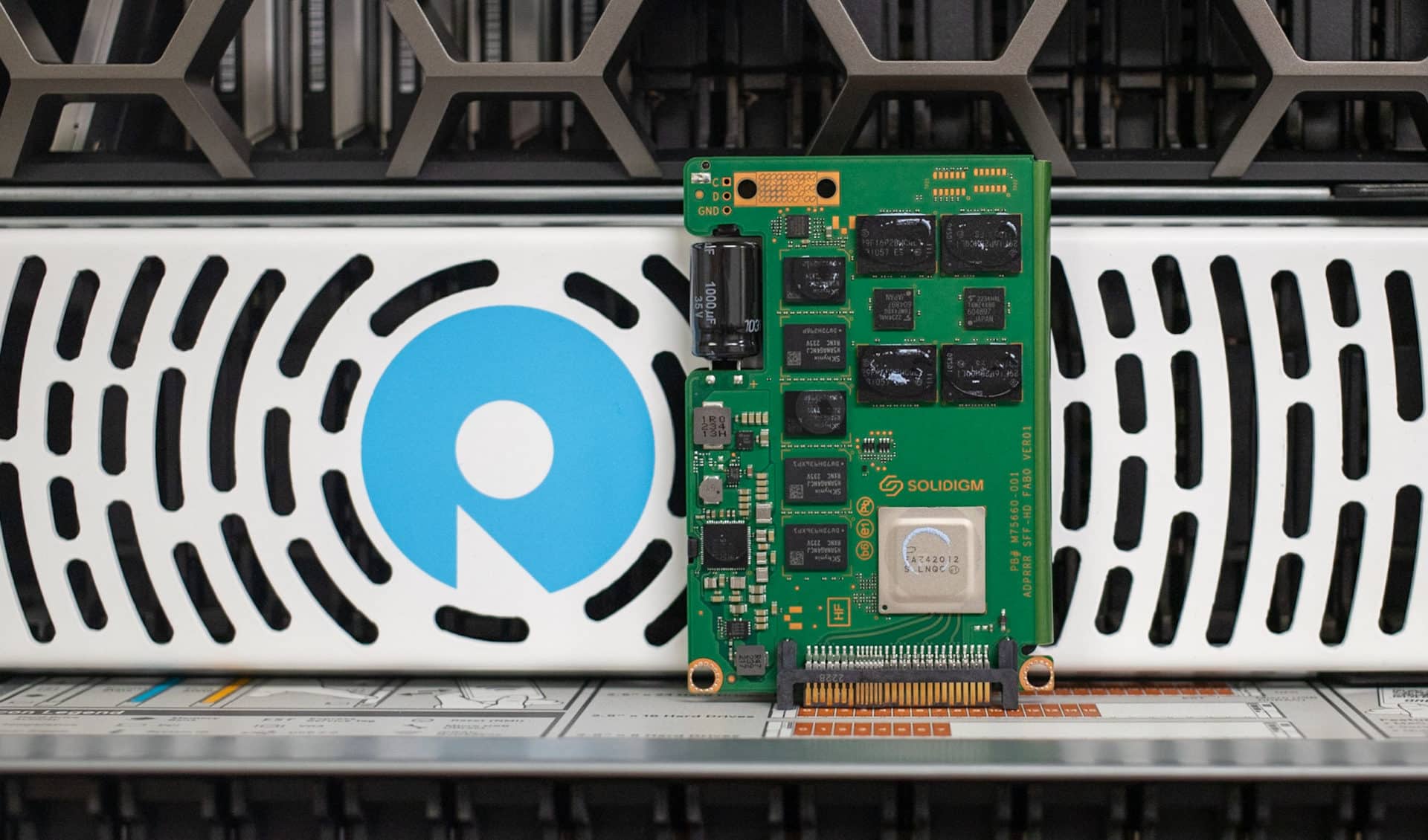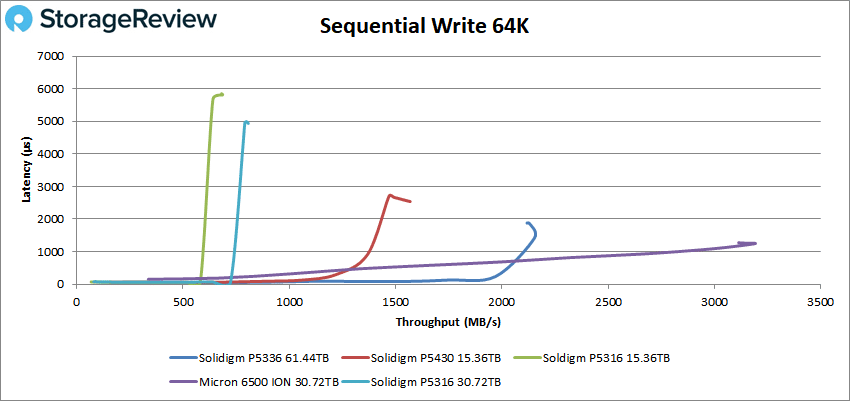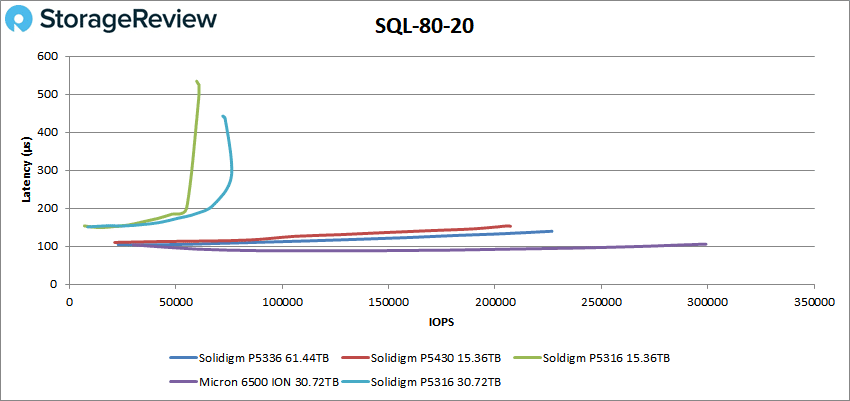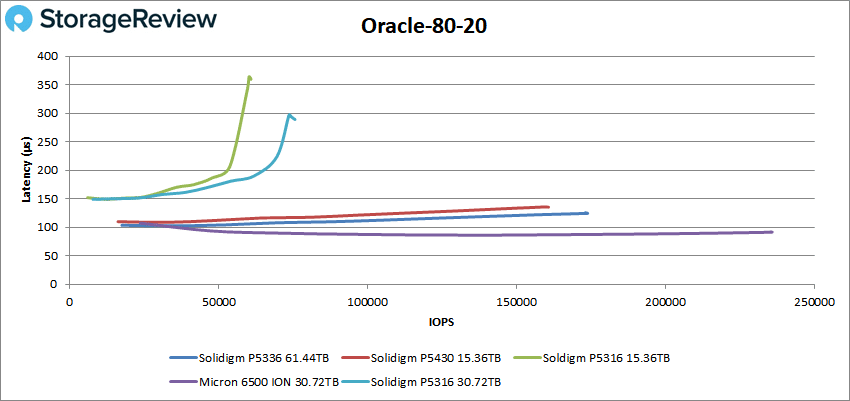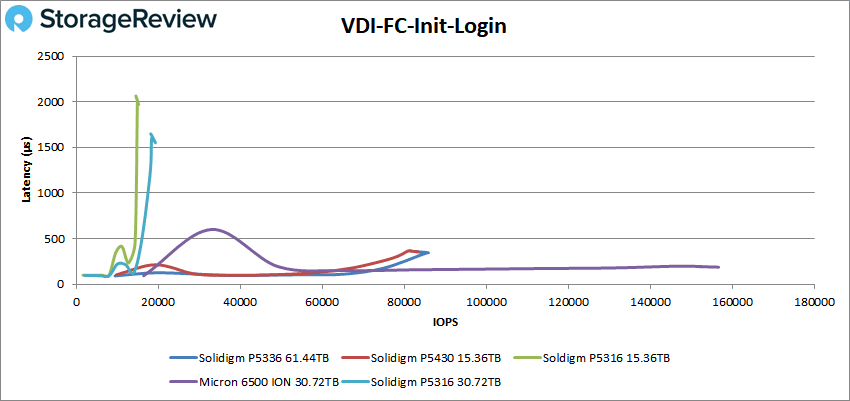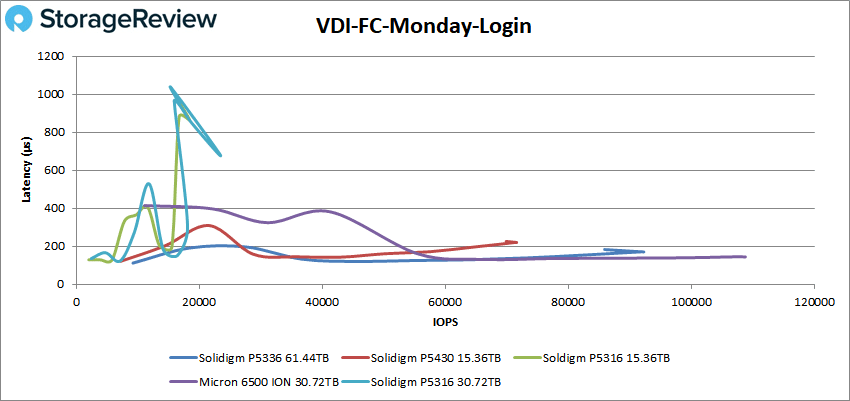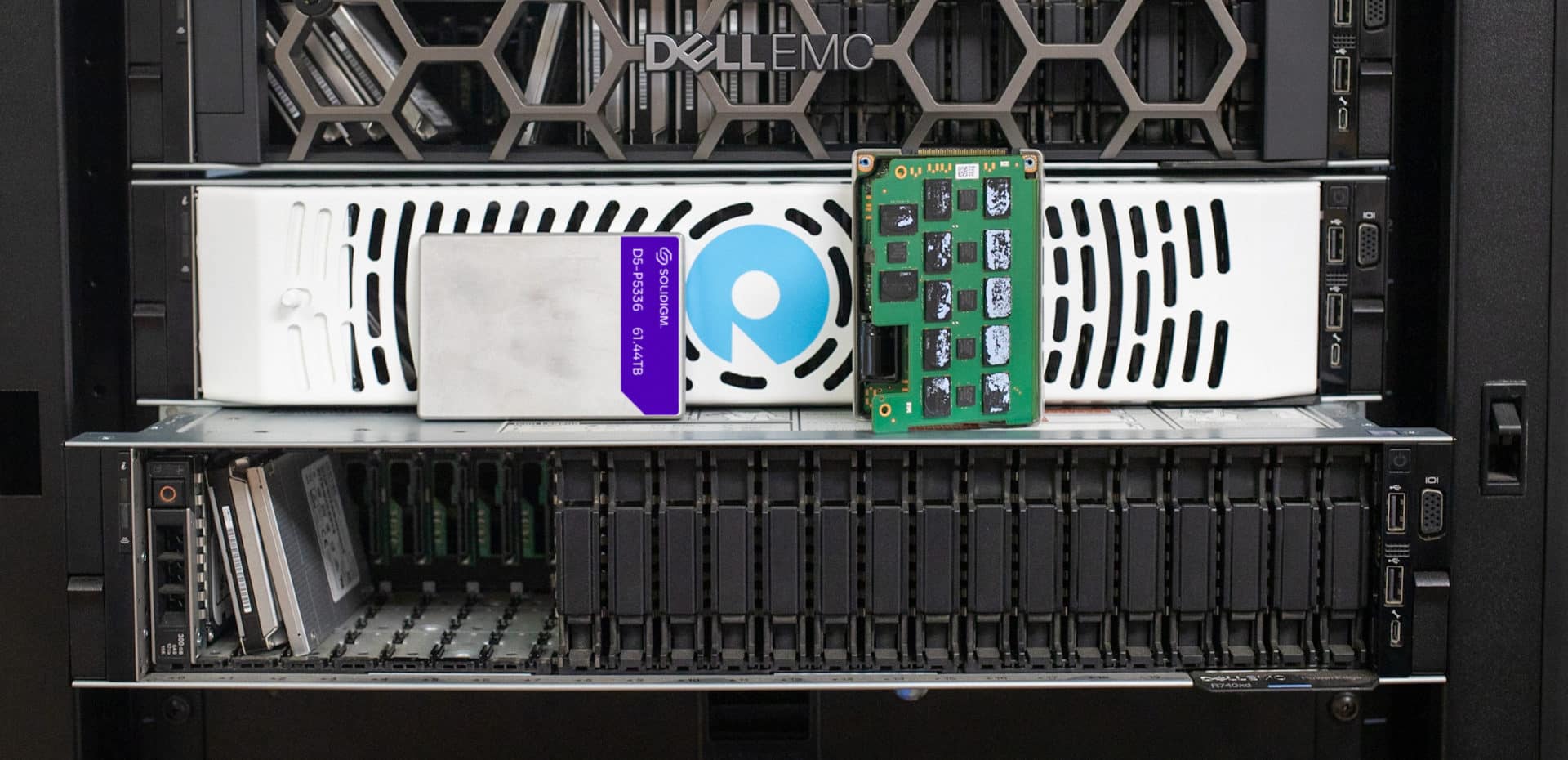The Solidigm P5336 represents a milestone in SSD technology, offering storage capacities ranging from 7.68TB to a staggering 61.44TB. This massive capacity point will significantly impact data server ecosystems. Available in various form factors, including U.2 15mm, E3.S 7.5mm, and E1.L 9.5mm, the P5336 offers organizations substantial scalability in high-density storage environments.
The Solidigm P5336 represents a milestone in SSD technology, offering storage capacities ranging from 7.68TB to a staggering 61.44TB. This massive capacity point will significantly impact data server ecosystems. Available in various form factors, including U.2 15mm, E3.S 7.5mm, and E1.L 9.5mm, the P5336 offers organizations substantial scalability in high-density storage environments.
Its support for NVMe 1.4c and OCP 2.0, coupled with features like Trim architecture improvements and FIPS 140-3 Level 2 certification, mark the P5336 as an advanced and flexible solution for modern data handling.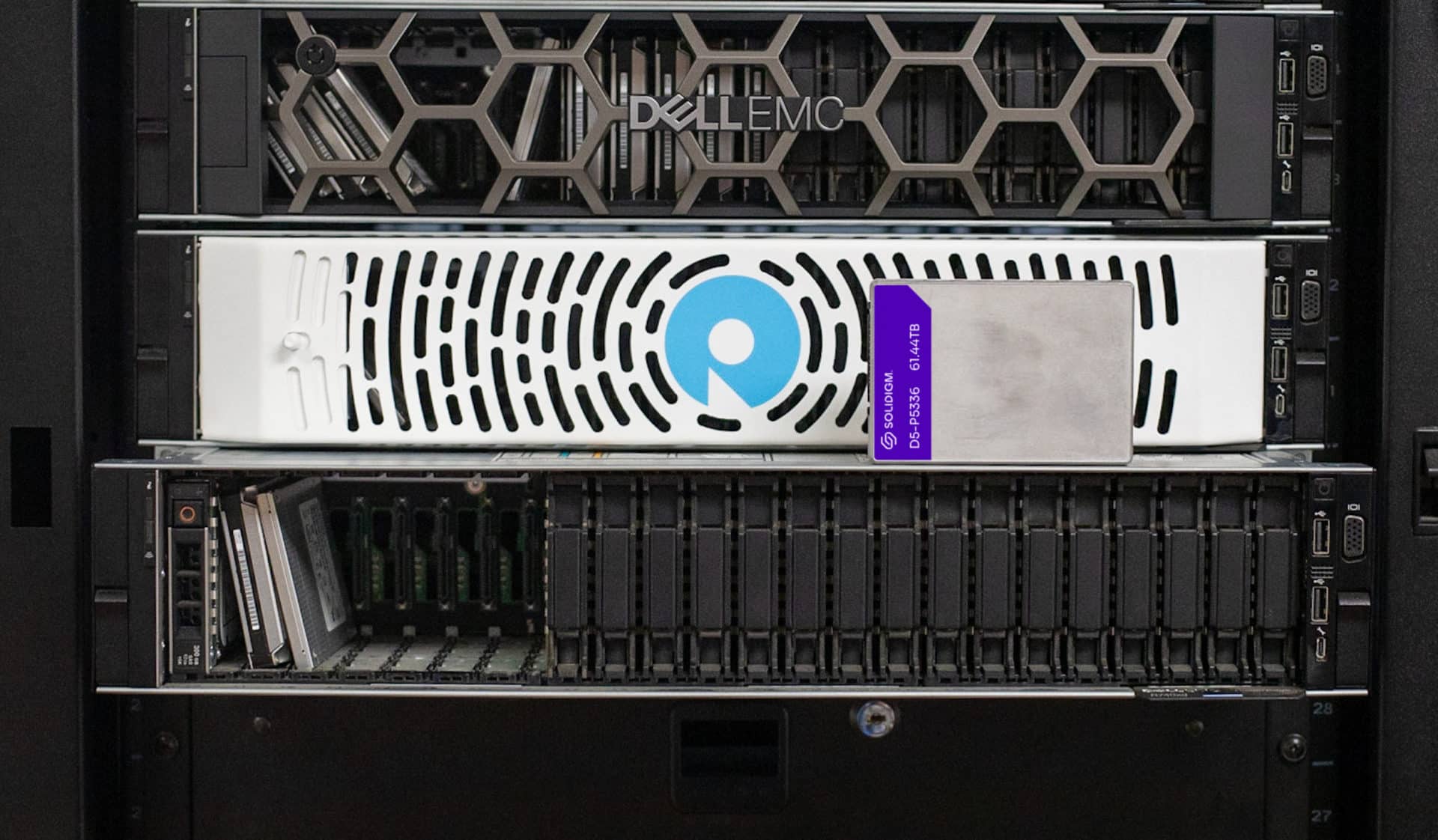
Solidigm P5336 Drive Density and Cost-Effectiveness
QLC technology is at the core of the Solidigm P5336’s appeal, contributing to the higher storage capacity on a smaller physical NAND package. This is hugely significant for data centers and other high-density environments where physical space is at a premium. Moreover, its QLC design leverages this increased storage density, making it an impressive solution for achieving massive scalability without sacrificing too much performance or efficiency.
As such, the Solidigm P5336 offers a new lifeline to organizations struggling to balance capacity, performance, and cost. By providing a 61.44TB capacity point, it addresses the challenges of managing massive data sets generated by AI, machine learning, and more. The QLC-driven high capacity reduces physical storage footprints, translating to substantial cost savings and more sustainable infrastructure. Combined with seamless integration with high-performance servers, the P5336 represents an effective, future-focused storage solution.
Here’s a quick rundown of the form factors with their capacity range:
- U.2 (15mm): 7.68TB – 61.44TB
- E3.S (7.5mm): 7.68TB – 30.72TB
- E1.L (9.5mm): 15.36TB – 61.44TB
Solidigm P5336 Performance and Read-Heavy Workload Optimization
The performance profile of the P5336 features 4K Random read speeds up to 1.005 million IOPS and 16K random write speeds up to 43K IOPS, while sequential performance is quoted at up to 7GB/s read and 3.3GB/s write. Its optimization for 16KB+ data size writes and faster read response times highlights its suitability for read-heavy workloads.
While the P5336 is designed to drive down data center costs in read-heavy workloads, it’s worth noting that this series may be less ideal for smaller mixed unit workloads. Even so, the overall performance, coupled with options like write shaping, demonstrates the SSD’s robust capabilities via its unique QLC design.
Within the Solidigm lineup, the P5336 finds its place among models like the D7-P5520 and the value-driven P5430. The P5336’s high storage capacity, strong performance profile, and QLC-driven density advantages make it a compelling proposition in the competitive landscape in today’s data-intensive world.
Solidigm P5336 Specifications
| Media | 192L QLC NAND (171GiB) | |||
| Power off Retention | 3 months @ 40°C | |||
| Performance |
|
|||
| Indirection Unit | 16KB | |||
| User Capacity | 7.68TB | 15.36TB | 30.72TB | 61.44TB |
| Endurance (5-yr DWPD) | 0.42 | 0.51 | 0.56 | 0.58 |
| Endurance (PBW) | 5.9 | 14.1 | 31.5 | 65.2 |
| Max Power | 25 W | |||
| Idle Power | <5 W | |||
| UBER | < 1 Sector per 1017 Bits Read | |||
| MTBF | 2 Million Hours | |||
| Features | OCP 2.0 support2, NVMe 1.4 Compliance3, FIPS 140-3 Level 2 | |||
Solidigm P5336 Performance
Testbed
Our PCIe Gen4 Enterprise SSD reviews leverage a Lenovo ThinkSystem SR635 for application tests and synthetic benchmarks. The ThinkSystem SR635 is a well-equipped single-CPU AMD platform, offering CPU power well over what’s needed to stress high-performance local storage. Synthetic tests don’t require a lot of CPU resources but still leverage the same Lenovo platform. In both cases, the intent is to showcase local storage in the best light possible that aligns with storage vendor maximum drive specs.
PCIe Gen4 Synthetic and Application Platform (Lenovo ThinkSystem SR635)
- 1 x AMD 7742 (2.25GHz x 64 Cores)
- 8 x 64GB DDR4-3200MHz ECC DRAM
- CentOS 7.7 1908
- ESXi 6.7u3
Comparables
- Solidigm P5316 (30.72TB)
- Solidigm P5316 (15.36TB)
- Solidigm P5430 (15.36TB)
- Micron 6500 ION (30.72TB)
VDBench Workload Analysis
When benchmarking storage devices, application testing is best, and synthetic testing comes in second place. While not a perfect representation of actual workloads, synthetic tests help baseline storage devices with a repeatability factor that makes it easy to make apples-to-apples comparisons between competing solutions. These workloads offer a range of testing profiles ranging from “four corners” tests and common database transfer size tests to trace captures from different VDI environments.
All of these tests leverage the standard vdBench workload generator, with a scripting engine to automate and capture results over a large compute testing cluster. This allows us to repeat the same workloads across a wide range of storage devices, including flash arrays and individual storage devices. Our testing process for these benchmarks fills the entire drive surface with data and then partitions a drive section equal to 25% of the drive capacity to simulate how the drive might respond to application workloads. This differs from full entropy tests, which use 100 percent of the drive and take them into a steady state. As a result, these figures will reflect higher-sustained write speeds.
Profiles:
- 4K Random Read: 100% Read, 128 threads, 0-120% iorate
- 4K Random Write: 100% Write, 128 threads, 0-120% iorate
- 64K Sequential Read: 100% Read, 32 threads, 0-120% iorate
- 64K Sequential Write: 100% Write, 16 threads, 0-120% iorate
- 64K Random Read: 100% Read, 32 threads, 0-120% iorate
- 64K Random Write: 100% Write, 16 threads, 0-120% iorate
- Synthetic Database: SQL and Oracle
- VDI Full Clone and Linked Clone Traces
In our first VDBench Workload Analysis, random 4K read, the Solidigm P5336 had a peak performance of just a hair under 1 million IOPS (999 IOPS) at a latency of 509.4µs. This placed it just behind the Micron 6500 ION.

Switching over to 64k sequential workloads, the Solidigm P5336 showed impressive performance, peaking at 7.11GB/s (114K IOPS) with a latency of 565.8µs for first place and pretty much in line with its quoted speeds.
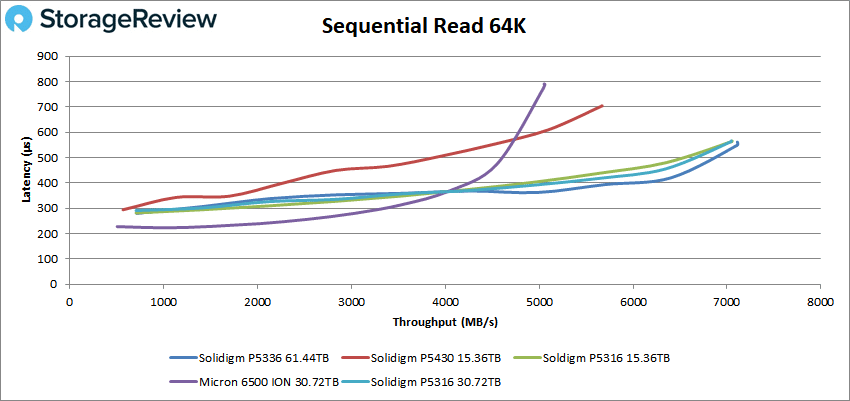
Next up is our 64K random performance, where the new Solidigm drive posted the top performance in read activity with 88K IOPS (5.51GB/s) and 362µs in latency in reads.
In 64K random writes, the Solidigm P5336 placed second with a peak of 33K IOPS (2.1GB/s) with 469.7µs in latency though still well back of the Micron drive.
Our next set of tests is our SQL workloads (SQL, SQL 90-10, and SQL 80-20), where it trailed the Micron drive in every category. Starting with SQL, the Solidigm P5336 posted a peak performance of 249K IOPS with a latency of 127.5µs.

With SQL 80-20, the Solidigm P5336 peaked at 227K IOPS at a latency of 139.4µs, trailing just the new Micron ION drive as usual.
Next up are our Oracle workloads: Oracle, Oracle 90-10, and Oracle 80-20. As with the SQL benchmarks, the Solidigm P5336 continued to take second place with solid results. Starting with the general Oracle workload, the P5336 had a peak performance of 252K IOPS at 135.4µs.

Our last Oracle test is the 80-20 workload, where the P5336 peaked at 174K IOPS with 124.4µs in latency.
Next, we switched to our VDI clone test, Full and Linked. For VDI Full Clone (FC) Boot, it peaked at 196K IOPS with a latency of 137.8µs.

With VDI FC Monday Login, the Solidigm P5336 posted 92K IOPS at a latency of 170µs before taking a noticeable performance spike at the end of the test.
For VDI Linked Clone (LC) Boot, the P5336 peaked at 88K IOPS with 180.9µs latency.
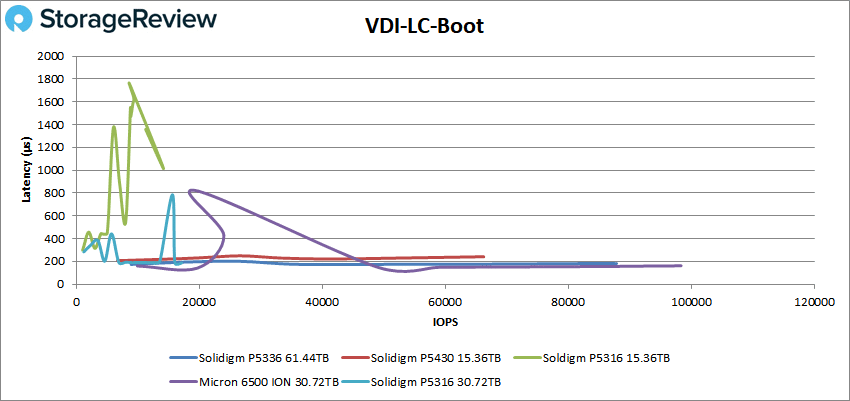
For VDI LC Monday Login, the P5336 took first place again, peaking at 71K IOPS with a latency of 220.3µs.
Conclusion
The Solidigm P5336 continues to push the density boundaries of data center storage capabilities. Offering models from 7.68TB to a staggering 61.44TB, the new Solidigm Series has the potential to make a significant impact in high-density storage environments.
Moreover, the P5336 is available in three different form factors, including U.2 15mm, E3.S 7.5mm, and E1.L 9.5mm. This gives data centers increased flexibility and compatibility, allowing them to optimize their storage solutions based on their specific space constraints and server configurations. It also allows them to cater to various use cases– from PowerScale to modern sense designs like VAST.
As for how it performed, the Solidigm P5336 excelled in our read-heavy workloads benchmarking, boasting solid 4K random reads of almost 1 million IOPS and 7GB/s in sequential 64K tests. While there may be more optimized Solidigm SSDs for smaller mixed unit workloads, the overall performance we measured across the board was solid.
At present, the Solidigm D-P5336 stands in a league of its own regarding capacity, and it remains to be seen how the market will answer this achievement. While Micron’s 6500 ION may have responded to something similar in May of this year, it could prove more challenging this time due to the need for further innovation to NAND densities.
Ultimately, the P5336 positions itself distinctively within Solidigm’s lineup, standing out as a highly flexible and advanced SSD solution. Its incorporation of QLC technology, combined with its vast storage capacity/density capabilities and strong performance profile, makes it a compelling choice for organizations seeking a storage solution that can handle the challenges of a data-intensive world. It’s also one of the best things we’ve seen all year, earning a “Best Of” nod for 2023.
Engage with StorageReview
Newsletter | YouTube | Podcast iTunes/Spotify | Instagram | Twitter | TikTok | RSS Feed

